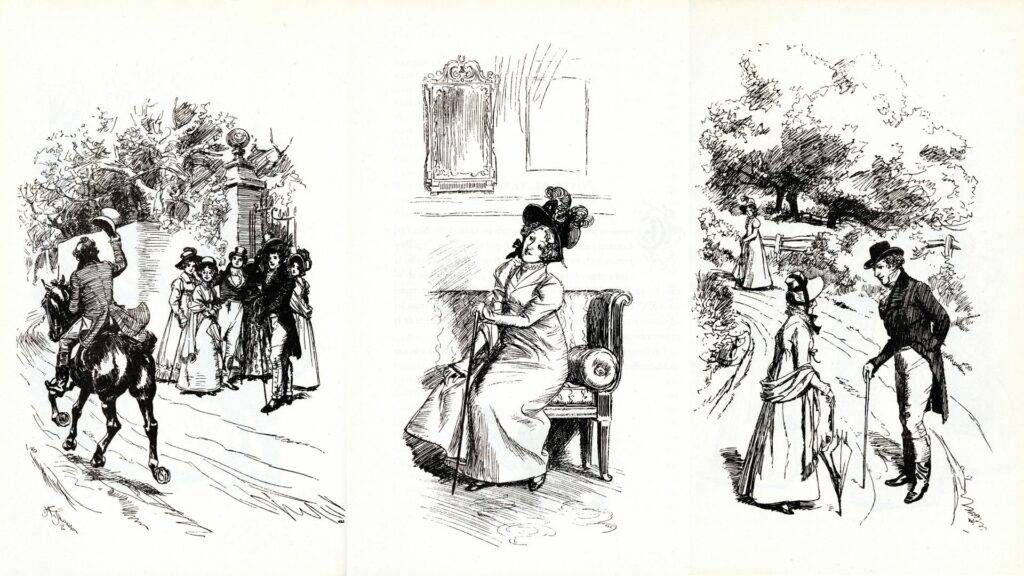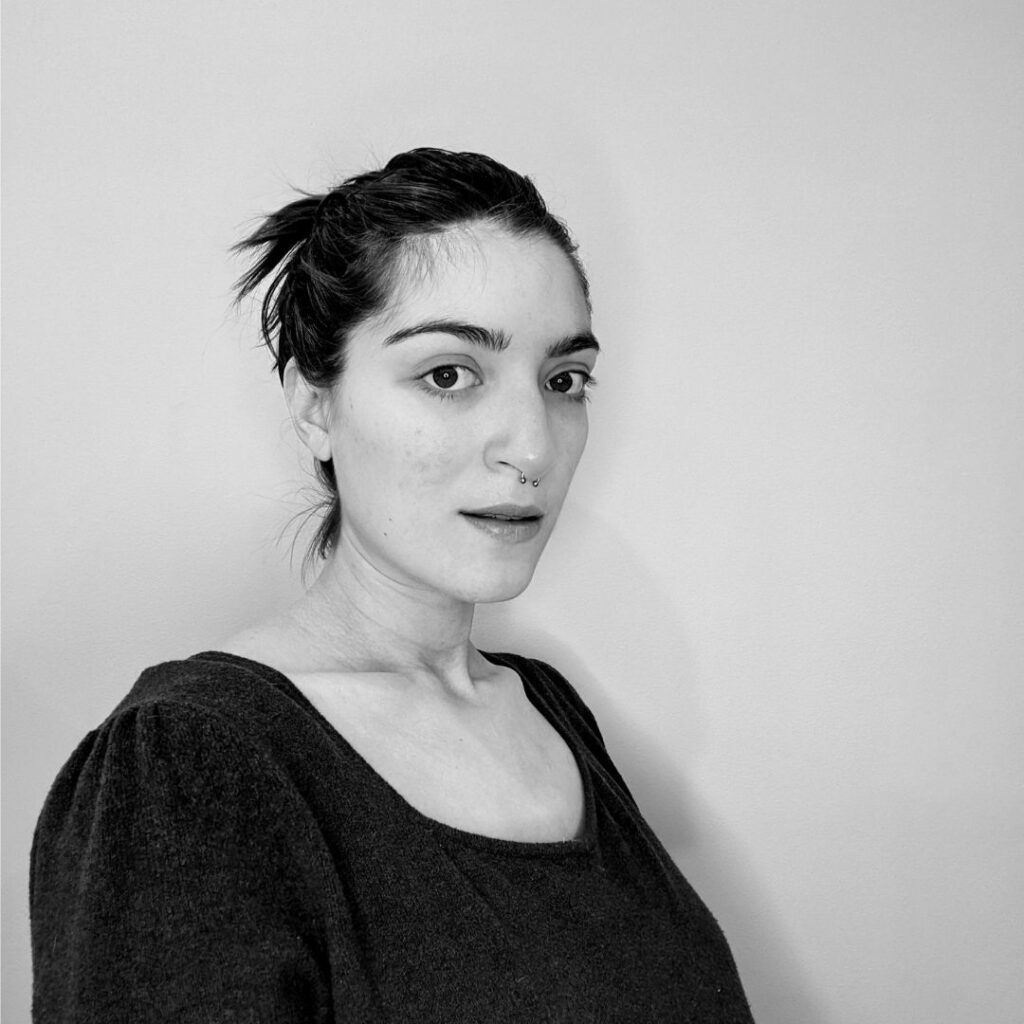
Illustrations by Hugh Thomson and reprinted in the 2014 Spanish Translation of Emma.
Out of the Rabbit Hole
As we come out of this exhibition together, I want to say thank you. Thank you for sharing this experience with me and every other viewer of “Emma and the Art of Translation.” We each came out having explored a unique and personal experience with this novel and we each participated in the artistic legacy of these literary translations.
Creating this exhibition was an honor and its reaches went far beyond the text, imagery, and audio found on this website. Researching each translator’s story inspired me to further explore Sergio Pitol’s original writings and novels. Exploring the cover art of each translation allowed me to unite my background in art education and current scholarship in literature. But the most impactful part of this exhibition’s creation was what happened behind the scenes when recording the chapter 1 audio for each translation. With weeks of coordination, these recordings allowed me to meet and work with amazing Spanish and French scholars and the experience brought together our community in a new way. I am still in awe over each audio reader’s vocal talents and the life they brought to this exhibition, along with the stories I had the pleasure of hearing about how this experience inspired new ideas in their work and community. All of this came to be because Austen chose to write and then publish Emma in 1815, three literary translators decided to transform her work through the Spanish language, two collectors decided to invest in the preservation of these translations, I had an idea for an exhibition, and my Goucher College community graciously agreed to help me bring that idea to vibrant life.
If you take anything away from this exhibition, I hope it is this: literature is more than text on paper. It is a vibrant painting by a community of artists (including yourself), spanning far beyond its original publication and authorship. The next step as you leave this exhibition is simple. I invite you to read Emma by Jane Austen and see where this colorful story takes you. Only time knows what magic Austen’s text will weave in your life and imagination.
Acknowledgments
It takes a village. It was very important to me when I began planning this exhibition, that it wouldn’t be created in my own isolated box. I wanted to unite the work we do here at Goucher in the library, literature, and modern language departments to show what can be created from a cross disciplinary and collaborative foundation. Collaboration was truly the foundation of “Emma and the Art of Translation” and it would not be here today without the support and participation of my village.
I want to begin by thanking Kristen Welzenbach, Debbie Harner, and Melissa Straw in Goucher College Library’s Special Collections and Archives who supported and aided my work within the Goucher College Jane Austen collection. I want to thank our Jane Austen benefactor, the late Alberta Hirshheimer Burke, who generously donated her Jane Austen collection to Goucher College upon her death in 1975 so students like myself could study the legacy and breadth of this amazing writer’s literary career. I want to thank my advisor Juliette Wells, who believed in my vision every step of the way and has not only supported and inspired me in this exhibition but also throughout my entire time at Goucher College.
I want to give a very special thank you to Jeanie Murphy, Viki Zavales Eggert, Maite Gomis-Quinto, and Mark Ingram who all generously lent their time and voices to this exhibition and brought Jane Austen’s words to life in their respective readings of the exhibited translations. And lastly, I want to acknowledge the behind the scenes team, Troy Vassalottio, who supported the technical and web-based creation of this exhibition, my husband who patiently supported every bump in the road that I faced in the creation of this final display, and every professor who has inspired me to explore my passion here at Goucher College. It takes a village and I am very grateful for the village of which I am a part.
Exhibition curated by Lilia Gestson (Goucher College Class of ’23)

Lilia Gestson, a Goucher College student and graduate of the class of 2023, came to Goucher College to study Jane Austen. After graduating high school in 2015 and experiencing Goucher College Library’s “Emma in America” exhibition, Goucher had always been on Lilia’s horizon. After graduating in 2019 with an Associate’s Degree in Art from Montgomery College and working at the Hirshhorn Smithsonian Museum as a museum educator, Lilia finally made the decision to pursue her Bachelor’s Degree in Literature at Goucher College. During her time here, she has focused her literary concentration on Jane Austen scholarship and Collections Management, working closely with Jane Austen Scholar, Juliette Wells, working in Goucher College Library’s Special Collections & Archives, and interning at Jane Austen’s House in Chawton, England. Her passion for literature lies at the crossroads where literature and art meet and unite to change our perspectives on the world around us.
Full Citation of Books on Display:
Austen, Jane. Emma. Ed. Juliette Wells, Penguin Classics, 2015.
Bofill Y Ferro, Jaime, translator. Emma. By Jane Austen, M. Arimany, 1945.
López Muñoz, José Luis, translator. Emma. By Jane Austen, Novelas y Cuentos, 1971.
Pitol, Sergio, translator. Emma. By Jane Austen, Alba, 2014.
de Saint-Segond, P. et E. Emma. By Jane Austen, Christian Bourgois Éditeur, 1979.
Additional Reading and Referenced Resources:
Dow, Gillian. “Translations.” The Cambridge Companion to ‘Emma,’ edited by Peter Sabor, Cambridge University Press, 2015, pp. 166-185.
Gilson, David. A Bibliography of Jane Austen. New York, Oxford University Press, 1982.
Kaplan, Laurie, and Nancy Magnuson. Twenty-Five Years of Jane Austen. 2000.
Explore more about Emma in Goucher College’s Jane Austen Collection and Emma themed exhibitions below.